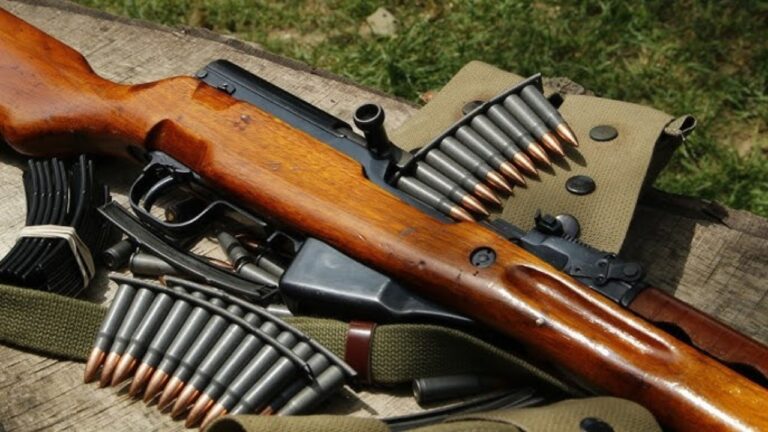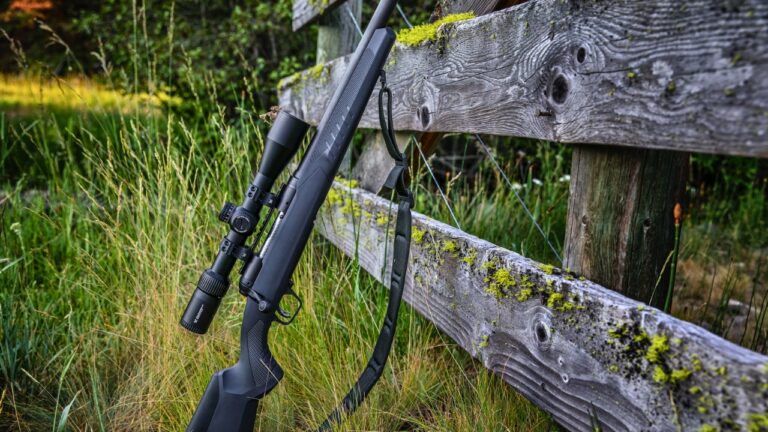Some guns are like throwing money into a pit and hoping it turns into something later—it doesn’t. You buy them new, shoot them a few times, and suddenly they’re worth half what you paid. These aren’t collector pieces or high-mileage beaters. They’re the ones that should hold value but somehow never do. Maybe they got overproduced. Maybe the market moved on. Maybe the reputation didn’t live up to the price tag. Either way, they’re the firearms you’ll have trouble offloading without taking a hit. If you’re the kind of buyer who cares about resale, you’ll want to be wary of the ones on this list.
Remington R51

The R51 came in with high expectations and face-planted out of the gate. Remington brought it back as a retro-style carry gun with claims of cutting-edge mechanics, but early models were plagued with feeding issues, harsh recoil, and a heavy trigger. Word spread fast, and buyers bailed even faster.
Even after the Gen 2 version fixed a few problems, the damage was done. Gun owners are hesitant to trust anything with R51 stamped on the slide. These days, you can find them used for a fraction of what they originally sold for. Doesn’t matter if it’s been reliable for you—it’s a tough sell. That resale value never recovered, and probably never will.
Taurus Spectrum

Taurus tried to make a soft-touch, stylish pocket pistol with the Spectrum, but the market didn’t bite. Between the odd design choices and hit-or-miss performance, it never gained much traction. Early reports of inconsistent reliability didn’t help either.
This wasn’t a gun that inspired loyalty. Even people who didn’t have problems with it seemed lukewarm about keeping it. You’ll see them listed online for under $200, often with the box and everything included. That’s all you need to know. It depreciates fast, and holding onto one won’t change that. If you want to resell it, expect to eat most of the cost.
Remington 597

The 597 was Remington’s attempt to compete with the Ruger 10/22, but it never quite lived up to the job. Accuracy wasn’t terrible, but it had a reputation for finicky magazines and inconsistent cycling. It doesn’t help that aftermarket support never really developed either.
You can still find folks who shoot them and like them, but when it comes time to sell, nobody’s looking. The 597 doesn’t have the same nostalgic pull or practical utility to keep its value afloat. Even the heavy-barrel target models go cheap these days. You could be the third owner and it still feels like no one wants to be the fourth.
Walther CCP

The CCP looked promising when it came out—ergonomic, soft-shooting, and tailored for concealed carry. But then came the issues. Disassembly was a chore, and reliability reports were mixed. The proprietary gas-delayed blowback system made it different, but not necessarily better.
By the time the M2 version rolled out, interest had already cooled. And because there’s no strong collector or aftermarket pull behind it, the resale value falls off fast. Even with a box and extra mags, you’ll see used CCPs going for way under what you’d expect. Buyers often pass right over them unless the price is rock bottom.
Mossberg Blaze

The Blaze is a lightweight .22 rifle that was clearly meant to be a budget plinker, and it shows. Built with polymer everywhere and no real weight to it, it feels more like a toy than a training rifle. Even the Blaze 47, which mimicked AK styling, didn’t do much to boost its appeal.
These rifles are cheap new—and somehow still drop in value used. Most gun folks go with the 10/22 or even a Marlin Model 60 for a reliable .22 rifle. The Blaze doesn’t inspire long-term use, and it definitely doesn’t hold its worth. You’re lucky to get half of what you paid back when it’s time to sell.
SIG P250

The P250 was supposed to be the answer to modularity before the P320 stole the show. It used a fire control unit you could drop into different grip modules and slides, which sounded great on paper. But the long double-action-only trigger wasn’t everyone’s cup of tea.
Sales lagged, and SIG quietly phased it out once the P320 took off. Today, used P250s flood the market, but buyers are hesitant. They know there’s no real support left and no upgrade path. Prices have tanked, and they’re tough to move even when priced low. It’s one of those guns that didn’t age well, and the resale market reflects that.
Kimber Solo Carry

Kimber’s Solo Carry was marketed as a premium micro-9mm option, but its reputation crashed hard after buyers got their hands on it. It was picky with ammo, hard to shoot well, and frustrating to maintain. You’ll find more people warning you away from it than recommending it.
Even though it looked sleek and had a premium price tag, it never really lived up to expectations. Now that it’s discontinued, the value has dropped even further. Collectors don’t care, and practical shooters don’t trust it. That’s a deadly combo for resale. These days, Solo Carries sit on consignment shelves far longer than they should.
FN FNS Series

The FNS line never got the same love as the FNX or the newer 509s. While they were well-built, they didn’t gain much traction in the market. Add in a recall on certain FNS pistols for accidental discharge issues, and the confidence in the platform took a big hit.
Even fans of FN tend to skip right past the FNS models when browsing for deals. They sell slow, and they don’t bring much money on the secondhand market. If you’ve got one, you’re likely holding it longer than you planned, and not because it’s a prized part of your lineup. Buyers just aren’t lining up for them.
Smith & Wesson Sigma Series

The Sigma was Smith & Wesson’s first real crack at competing with Glock. And while it worked, it didn’t work well enough to make a lasting impression. The trigger was heavy, and the ergonomics felt like an afterthought. It earned the nickname “Smegma” for a reason.
Even when the price is dirt cheap, resale can be even worse. The SD series improved on it slightly, but the stigma never left. Try to sell one now and you’ll hear crickets—unless someone’s specifically looking for a beater truck gun. Even then, you’re not getting much more than pocket change.
Bushmaster Carbon 15

Lightweight and budget-friendly, the Carbon 15 sounded like a decent entry-level AR. But once you started using it, the downsides became clear. The carbon fiber lower wasn’t known for long-term durability, and upper fitment issues weren’t uncommon either.
It got written off as a “cheap AR” that wasn’t built for serious use. Even after Bushmaster tried to improve on the design, it never really recovered its name. These rifles pop up used all the time, but buyers tend to steer clear unless the price is too good to ignore. Even then, resale value usually keeps falling.
KelTec Sub2000 (Gen 1)

The concept behind the Sub2000 is actually smart—folding pistol-caliber carbine that uses popular handgun mags. But the first-generation models had rough ergonomics, poor triggers, and questionable long-term reliability. Fit and finish weren’t great either.
Plenty of folks bought them on the idea alone, then got rid of them after the novelty wore off. And now, Gen 1 versions sit on gun store shelves collecting dust. Gen 2 did fix a lot of the complaints, but the older ones are stuck with bargain-bin resale prices. If you’re trying to sell one, expect lowball offers—and not much else.
Desert Eagle .50 AE (Gold/Chrome Finishes)

Let’s be honest—most folks who buy a flashy Desert Eagle aren’t planning to use it much. It’s big, heavy, and expensive to shoot. Once that initial “cool factor” wears off, it ends up sitting in the safe or heading to the classifieds.
The resale market is flooded with these showpiece Deagles that barely saw any use. But there’s not a huge crowd of serious buyers waiting to scoop one up. Especially the flashy finishes—those limit the appeal even more. The price may have been high new, but secondhand, they usually sell for way less than the seller hoped.
*This article was developed with AI-powered tools and has been carefully reviewed by our editors.






